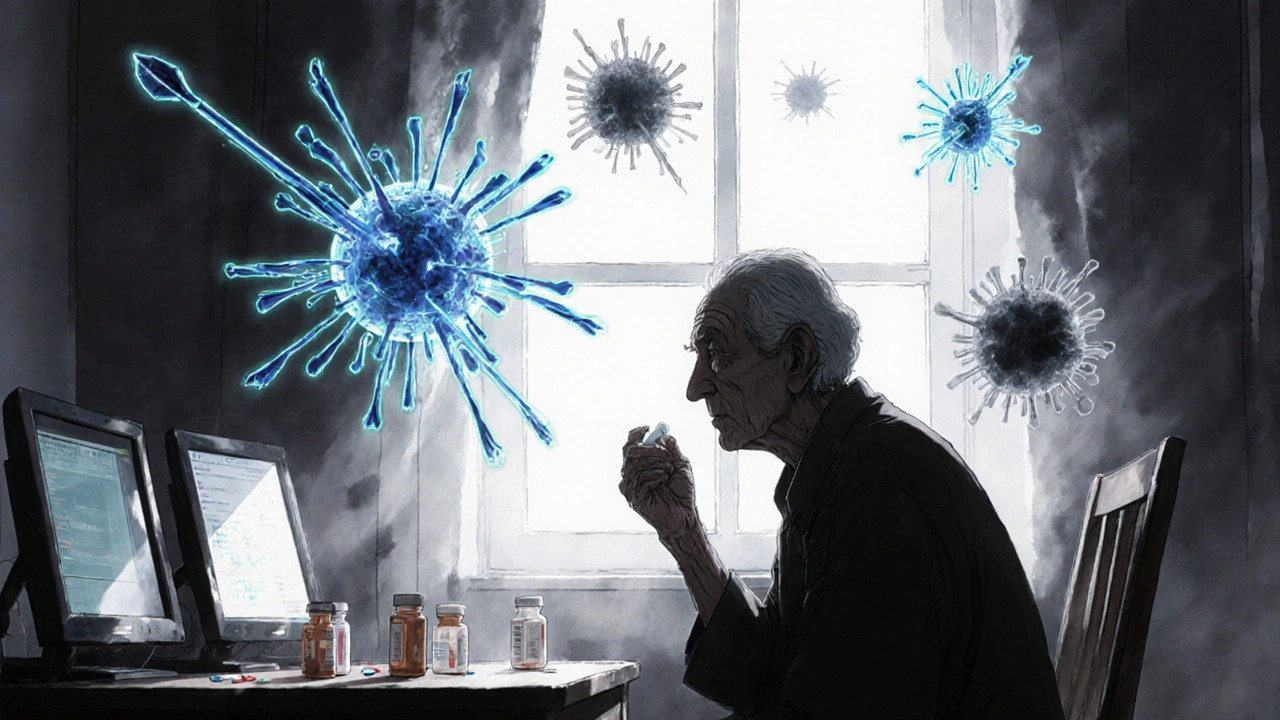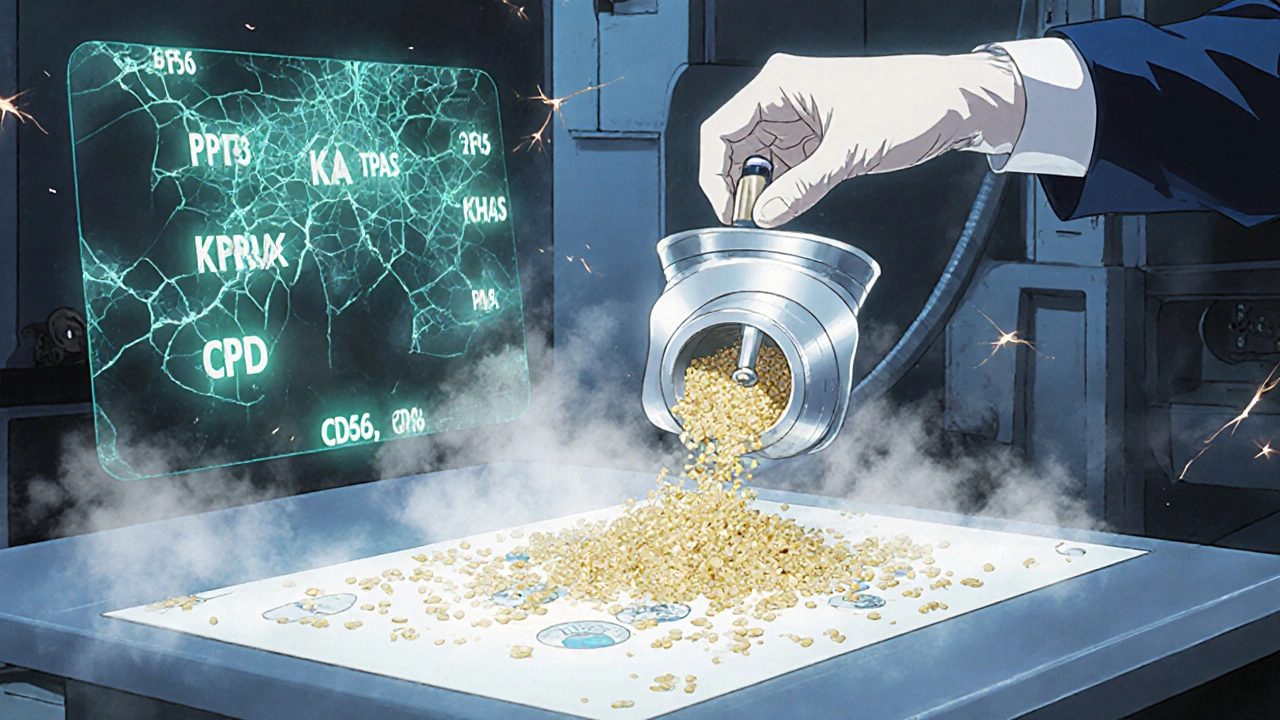Primary plasma cell leukemia (pPCL) is one of the most aggressive forms of blood cancer. Unlike multiple myeloma, which develops slowly over years, pPCL strikes fast-cancerous plasma cells flood the bloodstream, overwhelming bone marrow and organs. Survival rates are grim: without treatment, most patients live less than six months. But in recent years, lenalidomide has changed the game. It’s not a cure, but it’s become a cornerstone in turning this deadly disease into something manageable-for some, at least.
What is lenalidomide, and how does it work?
Lenalidomide is an immunomodulatory drug, part of a family that includes thalidomide and pomalidomide. It was first approved in 2005 for multiple myeloma, but its effects on plasma cell cancers quickly drew attention. Unlike chemotherapy, which kills cells outright, lenalidomide works in layers. It boosts the immune system’s ability to spot and destroy cancer cells. It also cuts off the blood supply tumors need to grow and blocks signals that let cancer cells multiply.
In pPCL, where cancer cells are especially aggressive and resistant, lenalidomide’s triple action matters. Studies show it reduces tumor burden by 50% or more in nearly 60% of newly diagnosed patients. That’s not just a number-it means fewer transfusions, less kidney damage, and more time to try other therapies.
Why is pPCL so hard to treat?
Primary plasma cell leukemia isn’t just a faster version of multiple myeloma. It’s genetically different. Patients often have mutations in genes like TP53 and KRAS, which make cells ignore normal death signals. They also overexpress CD56 and CD117, proteins that help cancer cells stick to bone marrow and hide from immune attacks.
Traditional chemo like VAD (vincristine, doxorubicin, dexamethasone) used to be standard, but response rates were under 30%, and remissions lasted weeks, not months. Even high-dose chemo followed by stem cell transplant-once seen as the best shot-only extended survival to about 12-18 months. Many patients were too sick to even qualify.
Lenalidomide changed that. Because it doesn’t rely on killing cells directly, it works even when cancer cells have developed resistance to chemo. It also has fewer severe side effects than older regimens, making it usable in older or frailer patients.
How is lenalidomide used in real-world treatment?
Today, lenalidomide is rarely used alone. It’s part of combination therapy, usually paired with dexamethasone and sometimes a monoclonal antibody like daratumumab. One common regimen is RdD-lenalidomide, dexamethasone, and daratumumab. In a 2023 study of 89 pPCL patients, 78% responded to RdD, and 34% achieved complete remission. Median survival jumped to 31 months.
For younger, fit patients, this combo is often followed by autologous stem cell transplant. For older patients or those with organ damage, lenalidomide-based therapy becomes the long-term backbone. Maintenance therapy after initial response can keep the disease quiet for over two years.
Some patients get lenalidomide as a bridge to transplant. Others get it as their only long-term treatment. The key is early use. Delaying lenalidomide until after chemo fails cuts its effectiveness in half.

Side effects and risks
Lenalidomide isn’t risk-free. The most common issues are low blood counts-especially neutropenia and thrombocytopenia. About 40% of patients need dose reductions or temporary pauses. Fatigue, diarrhea, and rash are also frequent but usually mild.
The biggest concern is blood clots. Lenalidomide increases the risk of deep vein thrombosis and pulmonary embolism, especially when combined with dexamethasone. That’s why nearly all patients are prescribed aspirin or low-dose blood thinners like enoxaparin during treatment.
It’s also a known teratogen. Pregnant women must avoid it completely. Men and women of childbearing age must use two forms of birth control during and for four weeks after treatment.
Some patients develop secondary cancers, like skin cancers or myelodysplastic syndromes, after long-term use. That’s why regular skin checks and blood monitoring are mandatory.
How does lenalidomide compare to other options?
Other drugs like bortezomib (a proteasome inhibitor) and carfilzomib are also used in pPCL. But lenalidomide has advantages:
- Oral administration-patients take it as a pill at home, not via IV in a clinic
- Better tolerance-fewer nerve-related side effects than bortezomib
- Longer duration of response-studies show median progression-free survival is 14-18 months with lenalidomide combos vs. 8-10 months with bortezomib-based regimens
But it’s not always the best choice. Patients with severe kidney failure may need bortezomib instead, since lenalidomide is cleared through the kidneys. Those with prior thalidomide allergies can’t use it at all.
For patients who relapse after lenalidomide, newer drugs like selinexor or CAR-T therapies are options-but they’re expensive, hard to access, and still experimental in pPCL.

Who benefits most from lenalidomide?
Not everyone responds equally. Patients with certain genetic profiles do better. Those without TP53 mutations have nearly double the chance of long-term response. Those with high levels of CD38 on cancer cells respond better when lenalidomide is combined with daratumumab.
Age matters too. Patients under 65 with no major organ damage often live 3+ years with lenalidomide-based therapy. Those over 75 or with heart or kidney disease may live 12-18 months, but they often report better quality of life than with chemo.
Early diagnosis is critical. Many patients are misdiagnosed as having multiple myeloma at first. If you have high white blood cell counts, bone pain, and kidney problems-and plasma cells make up more than 20% of your blood-don’t wait. Get a bone marrow biopsy and FISH testing right away.
The future of lenalidomide in pPCL
Research is now focused on making lenalidomide even more effective. Trials are testing it with next-gen immunotherapies like bispecific antibodies and CAR-T cells. Early results show patients who relapse after lenalidomide can still respond to CAR-T if they’ve had limited prior exposure.
Scientists are also exploring biomarkers to predict who will respond best. A blood test measuring levels of certain cytokines might soon help doctors choose between lenalidomide and other drugs before treatment even starts.
For now, lenalidomide remains the most widely used and best-studied drug for pPCL. It’s not magic, but it’s the closest thing we have to a turning point in a disease that used to mean a death sentence.
Is lenalidomide a cure for primary plasma cell leukemia?
No, lenalidomide is not a cure. It can induce deep remissions and significantly extend survival-sometimes for years-but the disease usually returns. It’s used to control the cancer, not eliminate it completely. For some patients, a stem cell transplant after lenalidomide may offer longer-term control, but even that isn’t guaranteed.
Can lenalidomide be used if someone has kidney problems?
Lenalidomide is cleared by the kidneys, so dosage must be adjusted in patients with reduced kidney function. In mild to moderate kidney impairment, lower doses are safe and effective. In severe kidney failure, doctors may switch to bortezomib, which doesn’t rely on kidney clearance. Regular blood tests are needed to monitor kidney levels during treatment.
How long do patients typically stay on lenalidomide?
Treatment usually continues until the cancer progresses or side effects become too severe. For patients who respond well and tolerate the drug, it can be taken for years-sometimes over 5 years as maintenance therapy. Doses are often reduced over time to manage side effects while keeping the cancer under control.
What happens if lenalidomide stops working?
If the cancer returns after lenalidomide, doctors may switch to another immunomodulatory drug like pomalidomide, or use a proteasome inhibitor like carfilzomib. For eligible patients, newer therapies like CAR-T cell therapy or bispecific antibodies are now available through clinical trials. These options can still work even after lenalidomide failure, though access is limited.
Is lenalidomide available worldwide, or only in certain countries?
Lenalidomide is approved and available in most high-income countries, including the U.S., Canada, Australia, and across Europe. In lower-income countries, access is limited due to cost and supply chains. Generic versions exist in some regions, but quality control can be inconsistent. Patients in these areas may need to rely on patient assistance programs or clinical trials.

Kyle Tampier
November 1, 2025 AT 15:37Khaled El-Sawaf
November 3, 2025 AT 07:24Nawal Albakri
November 4, 2025 AT 17:30Megan Oftedal
November 6, 2025 AT 00:58Musa Aminu
November 6, 2025 AT 06:06robert maisha
November 6, 2025 AT 10:04Alexander Ståhlberg
November 7, 2025 AT 21:11Robert Andersen
November 7, 2025 AT 22:25Eric Donald
November 9, 2025 AT 00:04Brenda Flores
November 10, 2025 AT 01:19Jackie R
November 10, 2025 AT 13:42Josh Arce
November 11, 2025 AT 06:12Eli Grinvald
November 11, 2025 AT 22:47Alexis Hernandez
November 12, 2025 AT 01:01